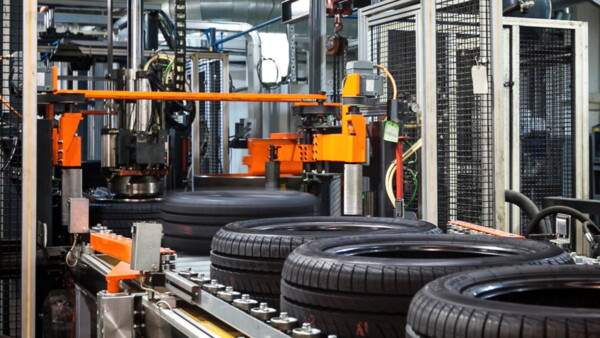Rubber and plastic sector: treatment systems for pollutants emitted
Abatement of VOC, oily mist, odours and dust from rubber and plastic processing

The rubber and plastic sector is one of the vastest and differentiated sectors both for the products and the applications. Furthermore, there are numerous companies that deal with the production of raw material, semi-processed materials and end products.
There are many processes carried out in this field and they involve the emission of different kinds of pollutants that must be extracted and treated through special abatement technologies.
Abatement technologies for Volatile Organic Compounds (VOC) and pollutants emitted during rubber and plastic processing
Products made of rubber and plastic are part of our daily life and, as we have anticipated, there are multiple processes to achieve them. Have you ever wondered what impact such production has on the environment?
The work carried out in this sector involves the emission of various pollutants that are dangerous for the environment and for operators. Among the main emitted substances, we have:
- Volatile organic compounds (VOC) produced by hot operations (vulcanisation, moulding and similar) on rubber or plastic items;
- Oil mists emitted during extrusion and moulding operations;
- Dust emitted by mixing and cold operations;
- Odours from rubber vulcanisation processes and other processes
The pollutants described above must be collected by means of special hoods and treated with specific technologies. The latter vary according to the concentrations and objective characteristics of the substances present in the airborne flow.
Let’s take a look at some of the typical problems in this sector and the abatement systems proposed and implemented by Tecnosida®.
Fume and dust abatement from production of rubber mixes
The rubber mixes are produced by mixing the elastomers with other substances that stabilise, colour and give specific properties to the product.
This industrial process is performed inside the specific mixers and involves emission of black smoke and dust from rubber, some of which have agglomerating behaviour.
To solve the problem, it is necessary to have a special system for extraction, conveying and abatement of pollutants.
Abatement of VOC and dust from silicone rubber vulcanisation
Silicone rubber is used for the production of different types of products (moulds, casts, cable coating and much more) and can be vulcanised at high temperature or at room temperature.
The vulcanisation process involves the emission of dust and VOC that must be extracted and treated through special multi-stage systems.
Styrene abatement systems for food tray production
Most of the food we buy is protected by paper or plastic containers.
However, the production of food trays can cause the emission of styrene, high viscosity polymer vapours and aliphatic hydrocarbons.
These specific pollutants must be treated by means of multi-stage systems capable of breaking down the oily component and adsorbing VOC.
Post-combustor for flexographic printing fumes
Flexographic printing is a widely used technique to customise flexible packaging that covers different types of products.
This process involves the emission of fumes containing considerable concentrations of volatile organic compounds (VOC) that must be treated through use of post-combustors (RTOs).
Cold plasma for abatement of odours from vulcanised rubber production
Rubber mixing and vulcanisation operations are used for the production of various end products.
These two processes involve the emission of very strong and annoying odours that must be treated before they spread into the surrounding environment.
In addition to traditional solutions, the cold plasma ionizer is an innovative alternative to this problem.
Abatement of air pollutants in the plastic and rubber sector
In the previous paragraphs, we analysed the plastic and rubber sector and presented an overview of the problems arising from the industrial processes used.
As we have seen, every production process involves the emission of different types of pollutants that are dispersed within the working environment and in the atmosphere.
In order to limit the impact on the environment and to protect the health of the operators, the producing companies must equip themselves with special installations for the collection and abatement of pollutants.
For this important activity entrusted to professionals! Tecnosida®, thanks to its long experience in the field, designs and manufactures tailor-made abatement systems to solve client problems by bringing emissions within the limits set by current regulations.
Contact us to arrange an inspection and together find a customised solution that best suits the needs of your business!